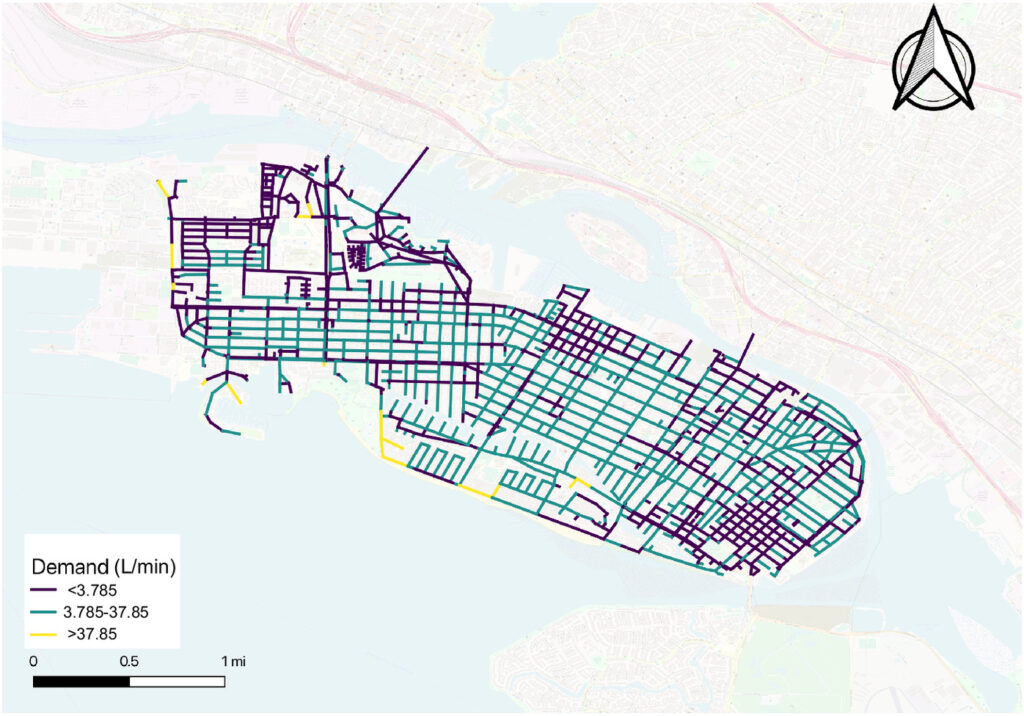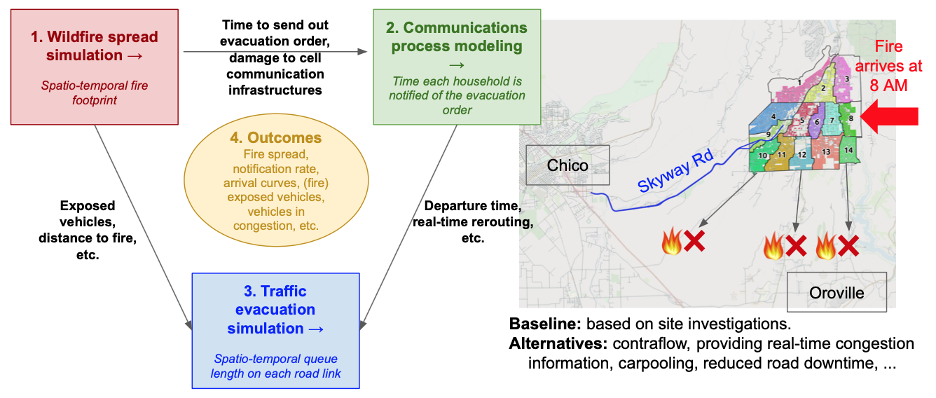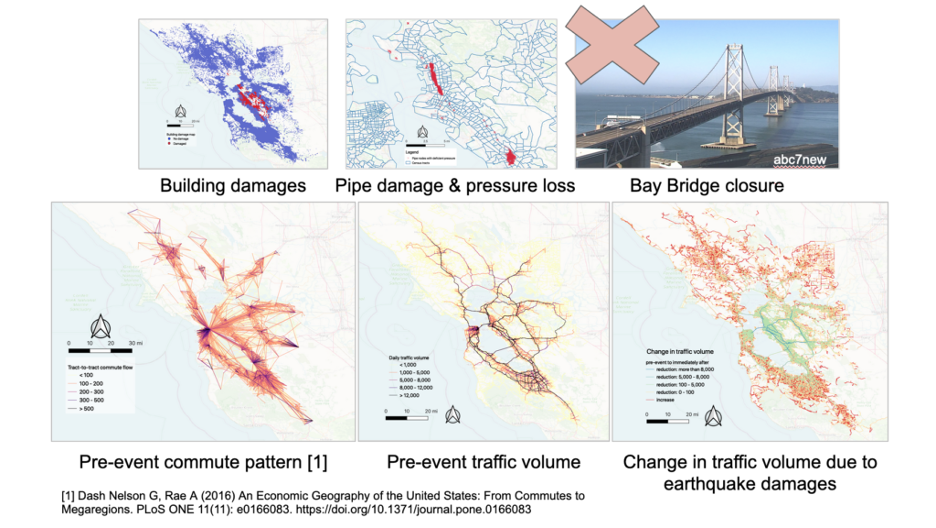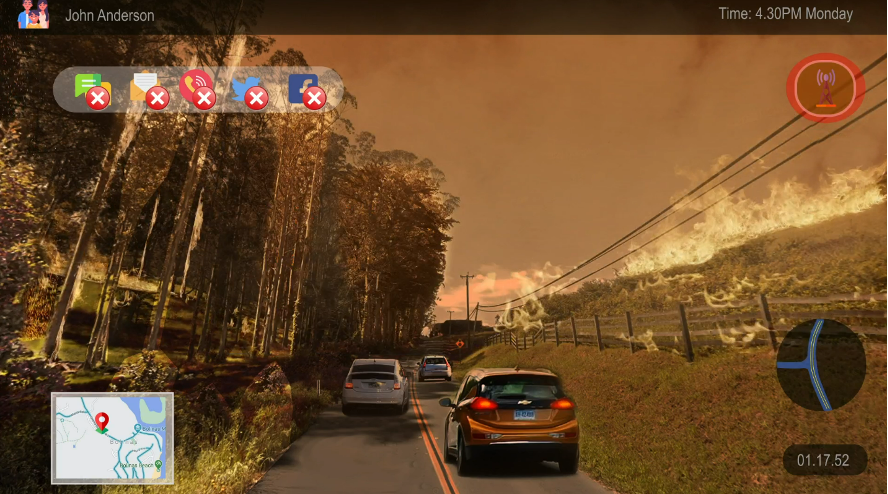The Infrastructure Computational Modeling Laboratory develops scientific simulation models to capture the behaviors of infrastructures and integrate them into a “system of systems” model to obtain transformative insights with policy implications.
Our work is kindly supported by the Computational Modeling and Simulation Center (SimCenter) of the NSF-funded Natural Hazards Engineering Research Infrastructure (NHERI) program, as well as the CB-Cities project.
Pipeline
Pipeline Fault Detection, Isolation, and Recovery (FDIR)
Water pipelines serve as “lifeline” infrastructure for cities. As water is indispensable for both citizens and industry, understanding the hydraulic properties of fluid inside pipes is essential for us to understand the resilience of the urban pipeline networks under both natural and man-made hazards.
Our research focuses on developing a high-performance city-scale water pipeline hydraulic simulator capable of: fluid characterization (hydraulic head, flow rate, etc.), leak status quantification for broken pipes, large scale (million+ nodes-links) computations, compatibility with other simulation tools. In addition, other high-performance tools for data-driven pipeline network performance evaluation are under development!
Wildfire
Wildfire Spread & Evacuation
Wildfire is a recurring natural disaster in California and other parts of the world which is becoming ever more common under the ongoing climate crisis. The pathway to improve disaster management capabilities requires a complex socio-technical operation involving the environment, governmental organizational and communication structures, as well as human behavior before, during, and after wildfire emergency situations.
A interdisciplinary team of software designers, game developers, social scientists, fire and traffic management agencies, and local communities has teamed up to develop a streamlines process to implement research results for transformative social impacts!
Earthquake Traffic
Seismic-related Transportation Infrastructure Response
Transportation system performance after earthquake disasters critically impacts rescue, recovery, and restoration efforts. A multidisciplinary approach for recovery process characterization is being pursued to better understand earthquake-related consequences on traffic. This integrated approach includes seismic analysis, structural analysis of critical effected infrastructure (buildings, bridges, pipelines, roads), as well as probabilistic analysis of disaster events and appropriate intervention strategies.
Current work includes investigation of transit system vulnerability and determination of recovery bridge corridors in the San Francisco Bay Area and the Port of Los Angeles.
System of systems
Multi-level System Interactions
A key question underpinning city-scale research is how to quantify the contributions of individual sub-systems to overall system performance. Sub-system interaction mechanisms have been proven to govern in various application case studies – with serious policy implications for strengthening of inter-sector cooperation for urban infrastructure management.
A key goal is to develop multi-level system digital twins to combine data and models of various subsystems to improve understanding of living environments.



